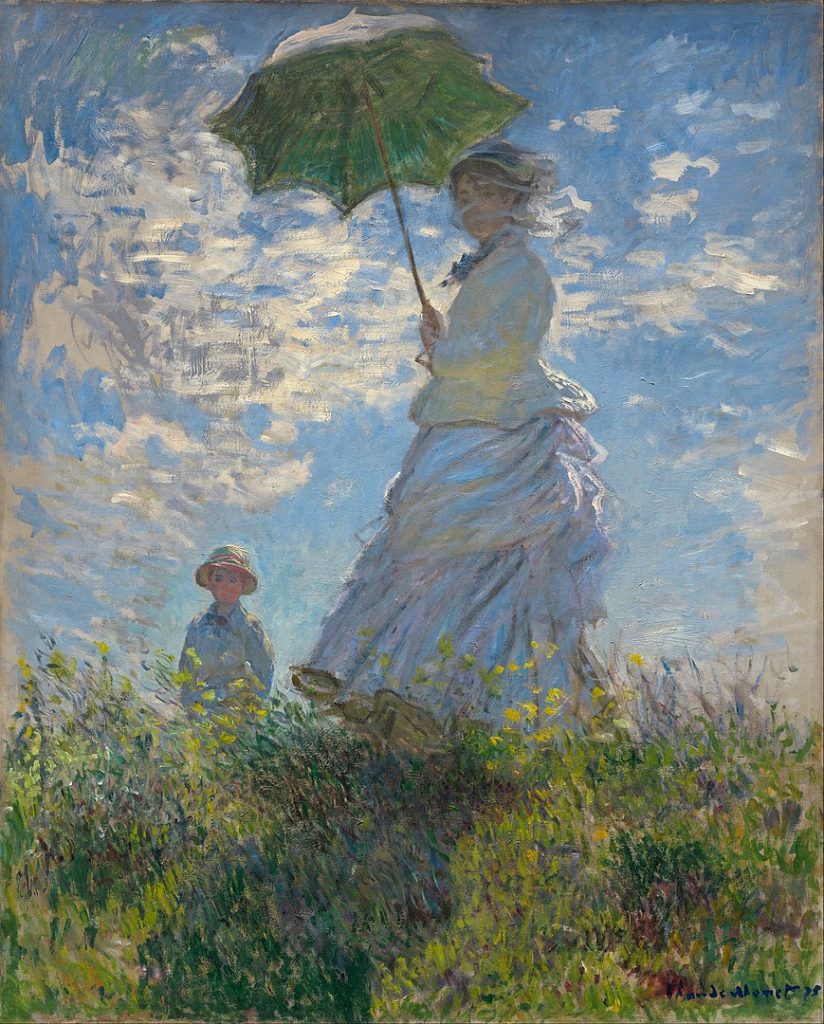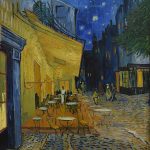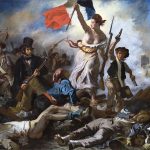
Art has a unique way of capturing history, culture, and emotion, which is why it’s a powerful tool in education. Incorporating famous painters into your homeschool curriculum can help children understand the world in ways that other subjects can’t. It’s not just about painting pretty pictures, either. It’s about seeing the world through the eyes of geniuses who shaped the course of art history.
Why Teaching Famous Painters Can Transform Your Homeschool Art Program
Homeschooling parents often wonder how to make subjects like art engaging and meaningful. Studying the styles of legendary painters gives students a hands-on understanding of creativity and technique. It’s a chance for kids to learn that art is not just about following rules, but about breaking them, too. These famous artists provide more than inspiration—they offer lessons in thinking outside the box.
In this guide, we will explore the styles of famous painters like Leonardo da Vinci, Vincent van Gogh, and Georgia O’Keeffe. Each artist brings a unique perspective that will not only enrich your homeschool art program but also make learning fun and interactive. And the best part? You can create your own art activities based on their techniques, making art history come alive in your home.
So, grab your brushes and prepare to dive deep into the world of artistic mastery. This guide will show you how to teach your children about the world’s greatest painters, while helping them develop their own creative voice.
What Defines an Artist’s Unique Style?
Every artist has a distinct style, and it’s what sets them apart in the history of art. But what exactly makes a painter’s work stand out? The answer lies in a combination of factors, including their use of color, brushstrokes, subject matter, and overall composition. These elements come together to form an artist’s “signature,” a way to recognize their work without even seeing the name on the canvas.
One of the key elements of style is the color palette. For instance, Vincent van Gogh is known for his bold use of contrasting colors, while Monet favored softer, pastel tones. The choice of colors can evoke emotions, create depth, or even distort reality. Color theory is an important aspect of any artist’s style, and it’s something that students can learn to appreciate by studying famous works of art.
Another crucial component is brushstroke technique. Different painters apply paint to canvas in different ways. For example, Van Gogh’s thick, swirling brushstrokes give his paintings a dynamic, almost moving quality. In contrast, Leonardo da Vinci’s strokes are smooth and meticulous, almost blending into the canvas. By understanding these techniques, students can start experimenting with different ways to apply paint, adding variety to their own work.
Composition, or the way elements are arranged on the canvas, is another defining aspect of a painter’s style. Some artists focus on symmetry and balance, while others use chaotic arrangements to disrupt the viewer’s expectations. Pablo Picasso, for example, challenged traditional composition rules with his Cubist paintings. By breaking down objects into geometric shapes, he offered a new way of looking at the world.
Studying these core elements helps students not only understand the genius behind famous paintings but also discover how they can apply these lessons to their own artwork. The journey into an artist’s style is like unlocking a new level of creativity. It’s an eye-opening experience for anyone learning about art.
Leonardo da Vinci: Merging Science with Art
Leonardo da Vinci is often hailed as the ultimate Renaissance man. His work in art, science, and engineering has fascinated people for centuries. What makes his art so extraordinary is his scientific approach to observation. Da Vinci believed that to paint the world accurately, one must study it closely. His anatomical sketches and studies of light and shadow laid the foundation for some of his most famous works.
One of Leonardo’s most famous techniques is chiaroscuro, the use of light and shadow to create depth and realism. In works like the Mona Lisa, da Vinci uses soft lighting to model the face, giving it a three-dimensional effect. This technique made his subjects appear more lifelike, setting his paintings apart from others of his time. His ability to mix scientific observation with artistic creativity is what makes him a true master.
Da Vinci’s attention to detail was unmatched. He spent years studying the human body to ensure his figures were anatomically correct. His sketches of muscles, bones, and organs were not just scientific; they were works of art. This focus on detail is something that students can learn from. By encouraging kids to study objects in real life, they can improve their observational skills and create more realistic artwork.
For a fun homeschool activity, try the Da Vinci Sketchbook Challenge. Have your children choose an everyday object—like a plant or a piece of fruit—and study it in detail. Encourage them to make multiple sketches from different angles, just like Leonardo would. This exercise will help them understand the importance of observation in art and develop their own drawing skills.
Vincent van Gogh: Expressing Emotion Through Color and Movement
Vincent van Gogh is famous for his use of bold colors and expressive brushstrokes. His paintings seem to pulse with emotion, whether it’s the swirling sky of Starry Night or the intense yellows of his Sunflowers. Van Gogh wasn’t afraid to let his feelings show in his work, and that’s what makes his style so unforgettable. He used color not just to depict the world as it is, but to convey how he felt about it.
Van Gogh’s use of thick, textured brushstrokes—known as the impasto technique—adds another layer of emotion to his paintings. The paint seems to leap off the canvas, adding a sense of movement and depth. This style makes his work feel almost alive, as if the viewer can feel the energy radiating from the painting. It’s a technique that students can experiment with in their own work by using thick layers of paint and bold strokes.
One of the most striking aspects of Van Gogh’s work is his color palette. He wasn’t afraid to use intense, contrasting colors that grabbed the viewer’s attention. For example, in Starry Night, the vibrant blue sky is lit up with bright yellow stars. These colors don’t just show a nighttime scene; they create an emotional experience. By studying Van Gogh’s use of color, students can learn how to use their own palettes to evoke feelings in their artwork.
For a hands-on homeschool activity, try creating a Van Gogh-inspired texture painting. Encourage your child to pick a subject—like a tree or a flower—and use thick layers of paint to recreate it. Let them experiment with using different objects to apply the paint, like sponges or cardboard. This will give them a better understanding of how texture and color can work together to create a powerful image.
Pablo Picasso: Deconstructing Reality to Rebuild It
Pablo Picasso was a rule-breaker in every sense of the word. He started his career painting in a traditional style but soon grew bored with it. Always looking to innovate, Picasso became one of the founders of Cubism, a style that deconstructed objects and rearranged them in abstract, geometric shapes. Cubism challenged the idea that art had to represent reality as we see it. Instead, Picasso showed that art could be about how we perceive reality.
One of the key aspects of Picasso’s Cubist work is his use of fragmented shapes. In paintings like Les Demoiselles d’Avignon, Picasso breaks down the human form into sharp, angular shapes. This was a revolutionary idea at the time, and it forced viewers to see things in a new way. Picasso didn’t just depict his subjects; he reconstructed them from multiple perspectives, offering a new understanding of form and space.
Another important element of Picasso’s style is his use of distorted proportions. Faces, bodies, and objects in his paintings often look skewed or out of place. But this was intentional. Picasso wanted to show that reality is not fixed, but constantly shifting based on perspective. This concept is something that students can explore in their own art by experimenting with proportion and perspective.
A great homeschool activity inspired by Picasso is creating a Cubist portrait. Have your children draw a simple portrait of themselves or a friend. Then, encourage them to break the face down into geometric shapes and rearrange them on the canvas. This will help them understand Picasso’s approach to deconstructing reality and allow them to create a fun, abstract work of art.
Claude Monet: Capturing Light and Atmosphere
Claude Monet was a master of light and atmosphere, and his work laid the foundation for the Impressionist movement. Unlike traditional painters who focused on detailed, realistic scenes, Monet was more interested in how light and color interacted in the moment. He wanted to capture the “impression” of a scene, rather than the scene itself. This led to a style that used quick, dappled brushstrokes and soft edges to create a sense of movement and change.
One of Monet’s most famous works, Impression, Sunrise, perfectly exemplifies this technique. The painting depicts a harbor at dawn, but instead of clear details, Monet uses quick, loose brushstrokes to convey the feeling of the moment. The colors blend together, and the light seems to shimmer on the water. This approach encourages viewers to focus on the mood of the scene, rather than the specifics.
Monet’s use of color was also groundbreaking. He often painted the same scene multiple times at different times of the day to capture how the light changed. His series of paintings of the Rouen Cathedral and the Water Lilies are excellent examples of this. By studying Monet’s work, students can learn how to use color to create different moods and atmospheres in their own paintings.
To bring Monet’s technique into your homeschool, try an Impressionist landscape painting activity. Take your children outside to paint a scene from nature, but encourage them to paint quickly. They should focus on capturing the colors and the light, rather than the details. This will help them understand the Impressionist focus on capturing the fleeting effects of light and color.
Georgia O’Keeffe: Bringing the Beauty of Nature Into Focus
Georgia O’Keeffe is famous for her close-up depictions of flowers, landscapes, and natural forms. She had a unique ability to magnify small details, turning them into powerful images. By zooming in on her subjects, O’Keeffe was able to show the beauty of nature in a way that often went unnoticed. Her work encourages viewers to take a closer look at the world around them and appreciate the details.
O’Keeffe’s paintings are known for their simplicity and clarity. She used bold, clean lines and soft, blended colors to create her iconic images. In works like Jimson Weed, she enlarged a simple flower to fill the canvas, making it both familiar and monumental. This technique of magnifying small objects is something that students can easily try in their own art.
One of the lessons students can learn from O’Keeffe is the power of focus. By narrowing her attention to a single object, O’Keeffe was able to create images that were both intimate and universal. This focus allowed her to explore the textures, colors, and forms of her subjects in great detail. Encouraging students to focus on a single aspect of nature can help them create more meaningful, detailed art.
For a homeschool activity inspired by O’Keeffe, try a Nature Zoom Art project. Have your children find a small object from nature, like a leaf or a shell, and draw it up close. Encourage them to focus on the details, enlarging the object so it fills the paper. This will help them appreciate the beauty of nature, just as O’Keeffe did.
Frida Kahlo: Painting Pain, Identity, and Symbolism
Frida Kahlo’s paintings are intensely personal, filled with emotion, pain, and powerful symbolism. She used her art to express her struggles with physical pain, her complex identity, and her relationships. Kahlo’s work often blends realism with surrealism, creating dream-like images that are packed with meaning. Her self-portraits, in particular, reveal deep truths about her inner world.
Kahlo’s use of symbolism is one of the defining features of her work. In The Two Fridas, she depicts two versions of herself, one in traditional Mexican dress and the other in European clothing. The painting explores her dual identity and the emotional struggles that came with it. Symbols like hearts, veins, and blood feature prominently, emphasizing the themes of pain and connection.
Another important element of Kahlo’s work is her vibrant use of color. She often used bright, bold colors to depict her Mexican heritage and to convey strong emotions. Her use of reds, blues, and greens creates a vivid, almost otherworldly atmosphere in her paintings. This use of color is something that students can explore in their own artwork to convey emotion and meaning.
A great activity for students inspired by Kahlo is creating Symbolic Self-Portraits. Have your children think about a personal experience or emotion they want to express. Then, encourage them to use symbols—like animals, objects, or colors—to represent their feelings in a self-portrait. This exercise helps students think about how to use art to tell their own stories, just like Kahlo did.
Jackson Pollock: Revolutionizing Abstract Expressionism
Jackson Pollock is perhaps best known for his drip painting technique, where he splattered paint across large canvases in a seemingly random fashion. Pollock’s work is a prime example of Abstract Expressionism, a movement that emphasized spontaneity, emotion, and the physical act of painting. His paintings are often chaotic, filled with energy, but they also reflect a deep connection between the artist and his work.
Pollock’s approach to painting was revolutionary because it broke away from traditional techniques. Instead of using brushes to apply paint in a controlled manner, Pollock would drip, pour, and fling paint onto the canvas. This method created layers of color and texture, giving his paintings a sense of depth and movement. It also allowed Pollock to express his emotions in a raw, unfiltered way.
One of Pollock’s most famous works, Number 1A, exemplifies his chaotic, yet controlled, style. The layers of paint seem random, but upon closer inspection, there is a rhythm to the splatters and drips. Pollock’s work invites the viewer to get lost in the abstract patterns, to feel the emotion behind the paint.
To bring a bit of Pollock’s energy into your homeschool, try an outdoor Pollock-style action painting activity. Lay out a large canvas or piece of paper, and let your children splatter paint on it using sticks, brushes, or even their hands. Encourage them to focus on the movement of the paint and how it interacts with the canvas. This is a great way for students to let loose and explore the more expressive side of art.
How Famous Artists Can Inspire Lifelong Creativity
Incorporating famous painters into your homeschool art curriculum can have a lasting impact on your child’s creativity and understanding of art. By studying the unique styles of artists like Leonardo da Vinci, Vincent van Gogh, and Frida Kahlo, students can learn that art is more than just a pretty picture—it’s a form of self-expression, a way of seeing the world, and a tool for thinking differently.
These activities not only teach important artistic techniques but also encourage children to think creatively and to see the world in new ways. Whether they are experimenting with Van Gogh’s bold brushstrokes or O’Keeffe’s close-up views of nature, students will discover that there are endless ways to express themselves through art.
The best part about studying these famous painters is that it opens up a world of possibilities for your child’s own artistic journey. They’ll learn that they don’t have to follow a set of rules to create something beautiful. Instead, they can explore their own ideas, experiment with different styles, and develop their own unique way of expressing themselves through art.
As Pablo Picasso famously said, “Every child is an artist. The problem is how to remain an artist once we grow up.” By introducing your children to the world’s greatest painters, you are helping them unlock their own artistic potential and fostering a love of creativity that will last a lifetime.




